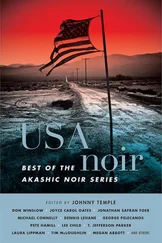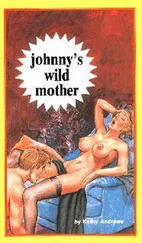Charlie Stella
JOHNNY PORNO
’Tis but thy name that is my enemy;
Thou art thyself, though not a Montague.
What’s Montague? it is nor hand, nor foot,
Nor arm, nor face, nor any other part
Belonging to a man. O, be some other name!
What’s in a name?
Amici:
A few years ago, after reading an article about the tragic life and death of Linda Susan Boreman (a.k.a., Linda Lovelace), I noticed a documentary had been made about the film responsible for her becoming an overnight celebrity and household name. Inside Deep Throat was a masterful exposé that detailed the many variables at play behind the making of the film and how its political persecution became the driving force behind its financial success. Immediately after watching the documentary, my wife and I looked to each other and said, “Next book.”
In 1973 Richard Nixon was inaugurated for his second term as President; the U.S. Supreme Court, in a 7-2 vote, legalized abortion with their decision in Roe v. Wade; U.S. involvement in North Vietnam ended with the signing of the Paris Peace Accords and Willie Mays hit his last home run (#660). Among these historic milestones was a decision by NY Criminal Court Judge Joel Tyler to ban the pornographic film, Deep Throat. Tyler wrote, “This nadir of decadence… this feast of carrion and squalor… this Sodom and Gomorrah gone wild before the fire… this is one throat that deserves to be cut.”
As films go, one has to acknowledge Deep Throat was nothing more than a campy, cheaply made porno that showcased the “sexual talents” of a young woman stage-named Linda Lovelace. With a soundtrack comprised of silly parodies and jingles and a plot born of male fantasy, the movie might well have come and gone without the slightest notice had the government ignored it. Instead, political directives from the White House launching a moral crusade that had much more to do with distracting the public from the war in Southeast Asia and an ever growing Watergate scandal guaranteed the film’s iconic success. What it also did was provide organized crime with a new way to make a fast buck. It is fittingly ironic that the name given to the secret informant (FBI agent, William Mark Felt) who provided information that would eventually take down the Nixon White House itself shared the name of the film.
Deep Throat was the brain child of a hair dresser from Queens (Gerard Damiano) who thought up the film’s storyline while driving across the Queensborough Bridge into Manhattan. After witnessing Linda Lovelace’s unique ability to perform fellatio, Damiano pitched the idea for the flick to a couple of New York wiseguys who then fronted the $25,000 film budget. Filmed in Miami over a six day period, Deep Throat would go on to earn more than $600 million. Unfortunately for Damiano and the cast of the movie, there was no trickle down income from the mob’s windfall profit. Damiano’s original one-third partnership was bought out for pennies on the dollar and he was told to skedaddle immediately after the film’s success. Lovelace was reportedly paid between $1,500—$2,500 for her performance in Deep Throat and her co-star, Harry Reems, originally hired to help with the lighting, earned a per diem of only $100. Both actors were burdened with nothing but problems afterward. Lovelace had not only been used by those behind the movie, she felt betrayed by the feminist movement after spending the latter half of her troubled life publicly battling the porn industry. Harry Reems nearly went to jail for his role in the movie and it is believed he was saved from the slammer only when (and because) Jimmy Carter defeated Gerald Ford in the 1976 presidential election.
With all the media attention and government-inspired moral outrage, Deep Throat became the proverbial forbidden fruit and the mob was gifted a new Prohibition. But America had proved itself ready to move beyond the sexual rigidity and censorship that had dominated the cultural landscape prior to the film’s release. A New York Times article proclaimed the film "Porno Chic: after several icons of American celebrity decried censorship and openly attended showings. By the time Judge Tyler rendered his decision to ban the film, Deep Throat had become taboo enough to entice the public into a near frenzy; people who’d never had a thought about pornography suddenly had to see it.
In the summer of 1973 I was between high school and college working a summer job humping sheetrock at the Olympic Tower in Manhattan to put aside a few extra coins before I flew off to Minot State College in North Dakota. I didn’t know a thing about Deep Throat, except that my father and a few of his friends had seen it and seemed to enjoy cracking jokes about it. I was focused on playing football. Fortunately, distractions like VCRs weren’t available yet (or like too many kids today obsessed with entertainment technology, I might never have left my bedroom).
Although the bulk of my focus back then was on football, a Freshman English class would forever alter my life (no matter how many detours I would make along the way). Dave Gresham, the smartest guy I know, was my professor. A Renaissance man in the truest sense of the word, Dave had received a Woodrow Wilson scholarship and attended the University of Iowa’s Writers Workshop (where he studied, along with fellow classmates John Irving, Andre Dubus and James Crumley, under Kurt Vonnegut and Richard Yates). Dave has designed and built a solar home from the ground up, was a state ranked tennis player and coach at Minot State College and smoked the fish he caught off his sailboat on Lake Sakakawea in some smoking gadget he’d made in his yard. Dave can name birds on sight and continues to rebuild homes, sailboats, etc., to this day. In fact, my last email exchange with Dave found him helping a friend of his make a new mast for a 107 foot boat—out of a hundred foot fir tree. As Dave put it, “with (how’s this for bird sightings) ospreys looking down on us and ducks hiding out in his front-yard pond.”
Dave and his wonderful wife Linda have also raised a more than exceptional family (two Harvard graduates and one Air Force Academy graduate). Dave was also a great teacher and not to weigh his record down with having influenced a small-timer like myself, it should be noted that he also taught a Pulitzer Prize winning journalist and current head of the Seattle office of the LA Times, Kim Murphy. Kim and I were classmates along with another terrific writer, Michael Vaughn, who was the college paper editor and probably the second smartest guy I ever met. All of us benefited from Dave’s ability to polish the already finely tuned (Kim and Mike) while simultaneously grooming the grammatically and academically challenged (myself).
Needless to say, I took every class I could from Dave and it was during my sophomore year when he began a Creative Writing class by reading the opening lines to the George V. Higgins classic, The Friends of Eddie Coyle, that I became hooked as an avid reader and a wannabe writer of modern crime fiction. I knew people who talked like the characters Higgins portrayed. I had lived around them most of my life.
By semester’s end, Dave had introduced me to Kurt Vonnegut’s Slaughterhouse-Five, Elmore Leonard’s Glitz and a host of other writers and their works who would put me on a reading binge that has lasted to this day. Dave had told our class: “Once you see your name in print, you’ll always want it there.” At the end of the semester he submitted a short story of mine for a college magazine writing award. It received an honorable mention and Dave’s prophecy proved correct. A victim of seeing something I had written get published, I indeed wanted more of the same.
Читать дальше


![Картер Браун - Том 11. Меня прислал Чарли [ Меня прислал Чарли. Близорукая русалка. Пираты из Гонконга. Убийственный кайф]](/books/103873/karter-braun-tom-11-menya-prislal-charli-menya-pri-thumb.webp)









